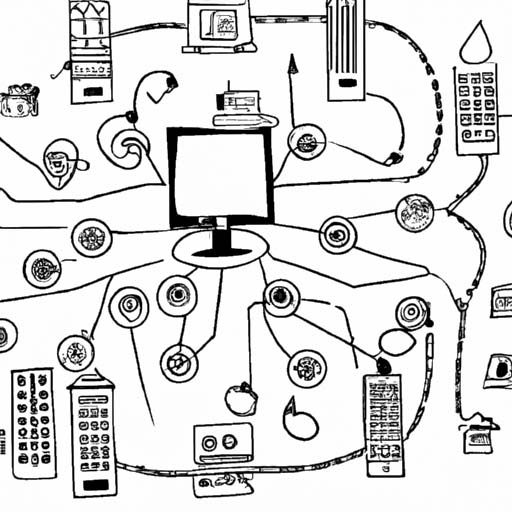Robotic Surgeries – A Deep Dive into Automated Medical Procedures
Welcome to our in-depth exploration of robotic surgeries and the precision and efficiency brought by robotic assistance in medical procedures. Over the past few decades, advancements in technology have revolutionized the healthcare industry, and one area that has seen significant progress is the field of robotic surgeries. In this article, we will delve into the world of automated medical procedures, discussing the benefits, applications, and future prospects of robotic surgeries. So, let’s strap on our virtual scrubs and take a closer look!
The Rise of Robotic Surgeries
In recent years, robotic surgeries have gained immense popularity in hospitals worldwide. This innovative approach combines the expertise of skilled surgeons with the precision of robotic systems, resulting in several advantages for both medical professionals and patients alike. By leveraging advanced robotic arms and high-tech instruments, surgeons are able to perform complex procedures with enhanced precision, improved outcomes, and reduced invasiveness.
Robotic surgeries encompass a wide range of medical procedures, including minimally invasive surgeries, cardiac procedures, and even cancer treatments. The utilization of robotic systems enables surgeons to make smaller incisions, leading to minimal scarring, reduced pain, quicker recovery times, and lower risks of complications. Moreover, these surgeries often result in shorter hospital stays, allowing patients to return to their daily lives sooner.
The Cutting-Edge Technology behind Robotic Surgeries
At the core of robotic surgeries lies the cutting-edge technology that drives these procedures. Most robotic surgical systems consist of robotic arms controlled by a surgeon who operates a console equipped with video monitors and master controls. The surgeon’s precise movements are translated into real-time actions by the robotic arms, enabling intricate maneuvers during the surgery.
The surgical robot itself typically consists of three components:
- The robotic arms: These highly flexible arms mimic the movements of the surgeon’s hands, providing a range of motion and dexterity beyond human capabilities.
- The console: Equipped with high-resolution 3D monitors and master controls, the console allows the surgeon to view the surgical site in greater detail and manipulate the robotic arms with utmost precision.
- The robotic instruments: Designed to fit through small incisions, these miniaturized instruments can perform various tasks such as cutting, suturing, and cauterizing, all under the surgeon’s command.
The seamless integration of these components creates a harmonious symbiosis between human skills and technological capabilities, resulting in incredibly accurate and efficient surgical interventions.
The Benefits of Robotic Surgeries
The adoption of robotic surgeries has brought numerous benefits to the medical field. Firstly, the precision offered by robotic systems allows surgeons to perform complex procedures with unprecedented accuracy, reducing the risk of errors and complications. Additionally, the smaller incisions required in robotic surgeries result in less blood loss, reduced post-operative pain, and lower rates of infection.
Moreover, robotic surgeries enable surgeons to access hard-to-reach areas of the body, increasing the range of possible treatments. This expands the options available for patients who were previously deemed unsuitable for conventional surgeries. The enhanced visualization provided by the 3D monitors also significantly improves surgeons’ ability to identify and remove tumors or other abnormalities with greater precision.
For medical professionals, the adoption of robotic surgeries offers the advantage of reduced fatigue during lengthy procedures. The ergonomic design of the consoles allows surgeons to maintain comfortable and natural body positions, minimizing physical strain and fatigue. This, in turn, leads to improved accuracy and better patient outcomes.
The Future of Robotic Surgeries
As we look forward to the future, the potential of robotic surgeries appears even more promising. Advancements in artificial intelligence, machine learning, and haptic feedback technology are expected to further enhance the capabilities of robotic surgical systems, making them even more autonomous and intelligent. Imagine a future where surgical robots can analyze real-time data, make informed decisions, and adapt their movements based on the patient’s specific anatomy.
Additionally, the continued miniaturization of robotic instruments may allow surgeons to perform procedures in previously impossible locations within the body, further expanding the range of treatments available. Furthermore, the cost of robotic surgeries is expected to decrease as technology continues to evolve, making them more accessible to patients and hospitals worldwide.
In conclusion, robotic surgeries have emerged as a game-changer in the field of medical procedures. Combining the skills of surgeons with the precision and efficiency of robotic systems, these procedures have redefined what is possible in the operating room. With continued advancements in technology, robotic surgeries hold tremendous promise for improving patient outcomes, expanding treatment options, and shaping the future of healthcare as we know it.
_
